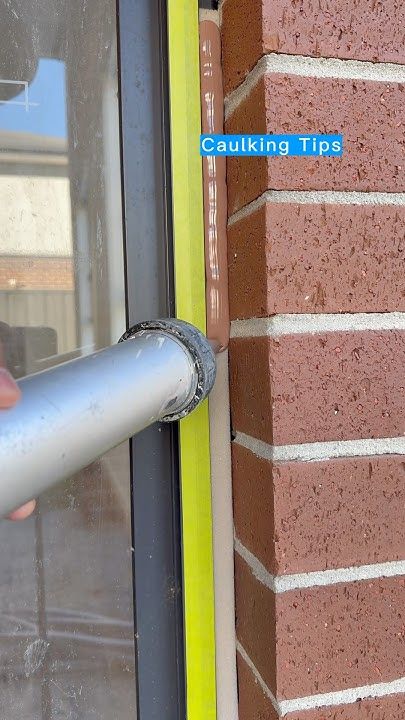Living in Miami comes with its perks, from beautiful beaches to vibrant nightlife. However, one of the less glamorous aspects of homeownership here is the constant battle against the elements. That’s where caulking and sealing come into play. These two processes are essential for protecting your home from moisture, pests, and the heat that can be unforgiving in our sunny city. In this article, I’ll share insights on the importance of caulking and sealing, how to do it effectively, and tips for maintaining your home in the Miami climate.
Why caulking is essential in Miami
Caulking forms a barrier that prevents air and water from entering your home. In a humid climate like Miami, proper sealing becomes even more critical. Without it, moisture can seep into walls, leading to mold, mildew, and structural damage. Therefore, keeping your spaces sealed and dry is not just a matter of comfort; it’s about protecting your investment.
Common areas that need caulking
- Windows: Cracks around window frames can let in drafts and humidity.
- Doors: Uneven gaps can lead to air leaks, making your air conditioning work overtime.
- Bathrooms: Sealing around sinks, tubs, and showers is crucial to prevent water damage.
- Kitchens: Areas around countertops and sinks are prone to water exposure.
- Baseboards: These can sometimes harbor pests if not sealed properly.
Identifying these areas in your home can save you time and money in the long run by preventing potential damage caused by moisture and pests.
Choosing the right caulk for the job
Not all caulks are created equal. In fact, you’ll find a variety of types available, each suited for different applications. Here’s a quick rundown to help you choose the right caulking for your Miami home:
- Acrylic Latex Caulk: Ideal for indoor applications and easy to clean up with water.
- Silicone Caulk: Best for areas exposed to water; it’s flexible and durable but harder to clean up.
- Polyurethane Caulk: Offers excellent adhesion and durability; great for outdoor applications.
When in doubt, consult with a professional to ensure you’re selecting the right product for your specific needs.
How to apply caulk like a pro
Applying caulk might seem like a simple task, but doing it correctly can make all the difference. Here’s a step-by-step guide to help you get that perfect seal:
- Prepare the surface: Clean the area thoroughly to remove old caulk, dirt, and dust.
- Cut the tip: Use a utility knife to cut the caulk tube tip at a 45-degree angle. The size of the opening will depend on the size of the gap you are filling.
- Apply the caulk: Squeeze the tube gently while moving along the seam. Keep a steady hand for an even application.
- Tool the caulk: Use a caulking tool or your finger to smooth out the bead and ensure it adheres well.
- Clean up: Wipe away excess caulk with a damp cloth before it dries.
As you can see, taking these steps can ensure that your caulking job not only looks great but also functions effectively.
Sealing your home: The next step
After caulking, sealing is the next critical step in protecting your home. Sealing can involve applying a sealant to surfaces, such as driveways, patios, and roofs, to prevent water damage and wear from the intense Miami sun.
Types of sealants to consider
- Concrete Sealers: Protect your driveway and patios from stains and weather damage.
- Roof Sealants: These can extend the life of your roof and prevent leaks.
- Wood Sealants: Protect wooden decks and furniture from moisture and UV rays.
Finding the right sealant for your specific surface is crucial. Not only does it improve longevity, but it also helps maintain the appearance of your property.
Maintaining your caulk and seals
Once you’ve done the hard work, it’s essential to keep an eye on your caulking and sealing. Regular inspections can save you from costly repairs down the road. Here are some tips for maintenance:
- Check for cracks: Inspect your caulking every six months for signs of wear.
- Clean regularly: Remove any mold or mildew buildup with a gentle cleaner.
- Reapply as needed: Don’t hesitate to reapply caulk or sealant if you notice deterioration.
By maintaining your caulking and sealing, you’ll not only keep your home looking its best but also ensure its longevity in the Miami climate.
Frequently Asked Questions
What is the difference between caulking and sealing?
Caulking is typically used for filling gaps and cracks in stationary joints, while sealing is often used to protect surfaces from moisture and damage.
How often should I replace caulk or sealant?
It’s a good idea to check caulking and seals every six months and replace them as necessary, especially in high-moisture areas like kitchens and bathrooms.
Can I do it myself or should I hire a professional?
If you’re comfortable with DIY projects, you can certainly tackle caulking and sealing. However, for larger or more complicated jobs, hiring a professional can save you time and ensure quality.
By focusing on caulking and sealing, you’re taking proactive steps to protect your home from the Miami weather. So, roll up your sleeves and get to sealing your home—your future self will thank you!






